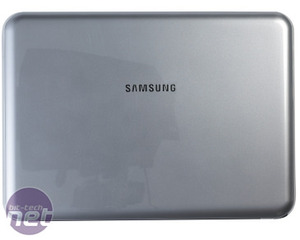Samsung X120 Ultraportable Laptop Review
UK price (as reviewed): £487.59 inc VATUS price (as reviewed): NA
While the public might be happy to buy Atom-powered netbooks and lightweight PCs by the truckload, it’s fair to say that we’re less enamoured of Intel's littlest CPU. Atom lacks the horsepower for anything but the most basic of modern PCs – for a machine that you can actually do something on, you need a bit more processing power.
That’s exactly what the CULV range of Intel processors aims to deliver – enough speed for moderately demanding applications, but with lower power consumption than a conventional laptop processor. CULV stands for Consumer Ultra Low Voltage, meaning that the CPUs don’t cost a fortune but do run at very low voltages (and therefore low power consumption). The Samsung X120 is one of the first CULV laptops we’ve seen, so we wanted to see whether it’s the ultraportable we’ve always wanted.
Being an X-series Samsung laptop, the X120 is designed to be a small, reasonably priced yet quite luxurious machine. It’s priced at just under £500, so it’s more expensive than your typical netbook, but is much cheaper than a similar machine would have cost a couple of years ago, when you’d have had to have spent over a grand to get a machine this light.
There are two versions of the X120 in the shops, with the main difference being the CPU. Our review model came with the 1.3GHz Intel Pentium SU4100, but there’s a slightly pricier X120 that has a 1.3GHz Core 2 Duo SU7300. The Core 2 SU7300 has 3MB of Smart Cache (that is, L2 cache that’s shared between the two CPU cores) while the Pentium SU4100 has only 1MB of L2 cache per core. However, the Pentium SU4100 has 64-bit support, which the Core 2 SU7300 mysteriously lacks – you can see a CPU comparison here on Intel's site.
Both CPUs have an incredibly low TDP of just 10W – this is the CULV benefit, and should help battery life no end. Typically, Pentium Mobile processors of the same calibre have a TDP of 35W, while T7000-series Core 2 Duo Mobile CPUs also draw 35W. (By the way, isn’t Intel’s product comparison tool really very good?)
The other main difference between the two X120 laptops is that our Pentium-based unit has 3GB of 1,066MHz DDR3 while the Core 2-based laptop has only 2GB. In all, we’d rather have the extra memory and £30 change or so that our cheaper model gives us rather than opt for the more expensive X120. We’ll just list the specs of our model below before moving onto the ports, screen, keyboard and so forth:
Specifications
- Processor: 1.3GHz Intel Pentium SU4100 (CULV)
- Chipset: Intel GS45
- Graphics: Intel GMA 4500M HD
- Memory: 3GB 1,066MHz DDR3
- Screen: 11.6in, LED backlight, 1,366 x 768, 16:9 ratio
- Storage: 250GB Seagate Momentus 5400.6 hard disk
- Network: Gigabit Ethernet, 802.11b/g/n WiFi
- Ports: 3 x USB 2, SD/SDHC/MMC card reader, mic, stereo
- Display outputs: HDMI, D-Sub
- Size (mm): 297 x 209 x 25 (W x D x H)
- Weight: 1.36kg
- OS: Windows 7 Home Premium 32-bit
- Extras: Internal mic, multi-touch trackpad, Samsung software suite

MSI MPG Velox 100R Chassis Review
October 14 2021 | 15:04











Want to comment? Please log in.